
The Walt Disney Company ; common metonym: the House of Mouse, the Mouse House or the Mouse) is an American diversified multinational mass media and entertainment conglomerate headquartered at the Walt Disney Studios complex in Burbank, California.

Toy Story is a 1995 American computer-animated comedy film produced by Pixar Animation Studios and released by Walt Disney Pictures. The first installment in the Toy Story franchise, it was the first entirely computer-animated feature film, as well as the first feature film from Pixar. The film was directed by John Lasseter, and written by Joss Whedon, Andrew Stanton, Joel Cohen, and Alec Sokolow from a story by Lasseter, Stanton, Pete Docter, and Joe Ranft. The film features music by Randy Newman, was produced by Bonnie Arnold and Ralph Guggenheim, and was executive-produced by Steve Jobs and Edwin Catmull. The film features the voices of Tom Hanks, Tim Allen, Don Rickles, Wallace Shawn, John Ratzenberger, Jim Varney, Annie Potts, R. Lee Ermey, John Morris, Laurie Metcalf, and Erik von Detten. Taking place in a world where anthropomorphic toys come to life when humans are not present, the plot focuses on the relationship between an old-fashioned pull-string cowboy doll named Woody and an astronaut action figure, Buzz Lightyear, as they evolve from rivals competing for the affections of their owner, Andy Davis, to friends who work together to be reunited with Andy after being separated from him.
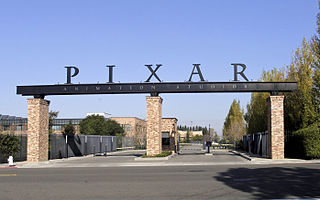
Pixar Animation Studios is an American computer animation studio known for its critically and commercially successful computer animated feature films. It is based in Emeryville, California, and is a subsidiary of Walt Disney Studios owned by The Walt Disney Company.
Modern animation of the United States from the late 1980s to late 1990s is referred to as the "renaissance age of American animation". During this period, many large American entertainment companies reformed and reinvigorated their animation departments following a general decline during the 1960s to 1980s. The United States has had a profound effect on animation worldwide. Since the 2000s traditional animation would lose interest against digital and Flash animation, naming this current period as the "millennium age of American animation".

Roy Edward Disney KCSG was a longtime senior executive for the Walt Disney Company, which was founded by his father, Roy O. Disney, and his uncle, Walt Disney. At the time of his death, he held more than 16 million shares, and served as a consultant for the company, as director emeritus for the board of directors. During his tenure, he organized the ousting of two top Disney executives: Ron Miller in 1984 and Michael Eisner in 2005.
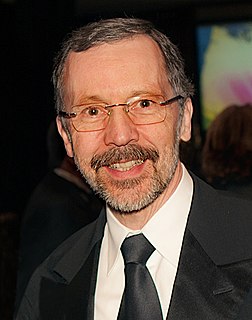
Edwin Earl "Ed" Catmull is an American computer scientist who was co-founder of Pixar and president of Walt Disney Animation Studios. He has been honored for his contributions to 3D computer graphics, including the 2019 ACM Turing Award.
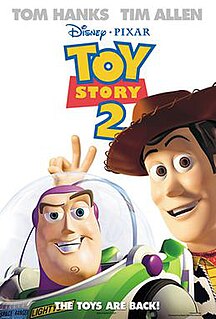
Toy Story 2 is a 1999 American computer-animated comedy film directed by John Lasseter and produced by Pixar Animation Studios for Walt Disney Pictures. It is the second installment in the Toy Story franchise and the sequel to Toy Story (1995). In the film, Woody is stolen by a toy collector, prompting Buzz Lightyear and his friends to rescue him, but Woody is then tempted by the idea of immortality in a museum. Tom Hanks, Tim Allen, Don Rickles, Wallace Shawn, John Ratzenberger, Jim Varney, Annie Potts, R. Lee Ermey, John Morris, and Laurie Metcalf all reprise their character roles from the original film. The returning cast is joined by Joan Cusack, Kelsey Grammer, Estelle Harris, Wayne Knight, and Jodi Benson, who voice the new characters introduced in this film.
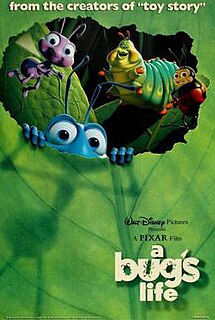
A Bug's Life is a 1998 American computer-animated comedy film produced by Pixar Animation Studios for Walt Disney Pictures. It was the second film produced by Pixar. Directed by John Lasseter and co-directed and written by Andrew Stanton, the film involves a misfit ant, Flik, who is looking for "tough warriors" to save his colony from a protection racket run by Hopper's gang of grasshoppers. Unfortunately, the "warriors" he brings back turn out to be an inept troupe of Circus Bugs.
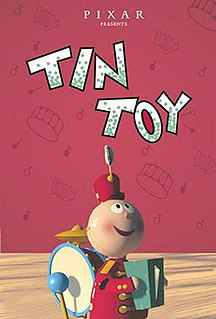
Tin Toy is a 1988 American computer-animated short film produced by Pixar and directed by John Lasseter. The short film, which runs five minutes, stars Tinny, a tin one-man band toy, attempting to escape from Billy, a silly infant. The third short film produced by the company's small animation division, it was a risky investment: due to the low revenue produced by Pixar's main product, the Pixar Image Computer, the company was under financial constraints.
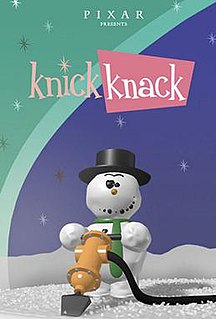
Knick Knack is a 1989 American computer-animated short film produced by Pixar and directed by John Lasseter. The short is about a snow globe snowman who wants to join the other travel souvenirs in a summer-themed party. However, the glass dome that surrounds him prevents him from doing so, thus leading to his many attempts to break out of his snow globe. Knick Knack is Pixar's fourth short and the final short produced during the company's tenure as a hardware company.

Luxo Jr. is a 1986 American computer-animated short film produced and released by Pixar in 1986. Written and directed by John Lasseter, the two-minute short film revolves around one larger and one smaller desk lamp. The larger lamp, named Luxo Sr., looks on while the smaller, "younger" Luxo Jr. plays exuberantly with a ball that it accidentally deflates. Luxo Jr. was Pixar's first animation after Ed Catmull and John Lasseter left Industrial Light & Magic's computer division of Cinetron Computer Systems. The film is the source of Luxo Jr., the mascot of Pixar.
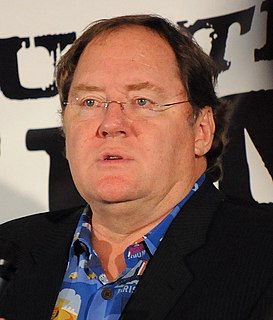
John Alan Lasseter is an American film director, producer, screenwriter, animator, voice actor, and the head of animation at Skydance Animation. He was previously the chief creative officer of Pixar Animation Studios, Walt Disney Animation Studios, and Disneytoon Studios, as well as the Principal Creative Advisor for Walt Disney Imagineering.

Walt Disney Animation Studios (WDAS), sometimes shortened to Disney Animation, is an American animation studio that creates animated features and short films for The Walt Disney Company. The company's production logo has a scene from the very first cartoon with sound, Steamboat Willie. Founded on October 16, 1923 by brothers Walt Disney and Roy O. Disney, it is one of the oldest-running animation studios in the world. It is currently organized as a division of Walt Disney Studios and is headquartered at the Roy E. Disney Animation Building at the Walt Disney Studios lot in Burbank, California. Since its foundation, the studio has produced 59 feature films, from Snow White and the Seven Dwarfs (1937) to Raya and the Last Dragon (2021), and hundreds of short films.
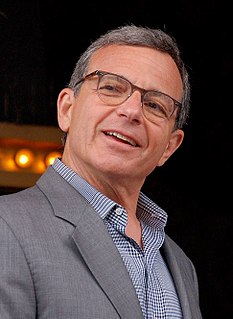
Robert Allen Iger is an American businessman who is executive chairman, chairman of the board, and former CEO (2005–2020) of The Walt Disney Company. He previously served as president of ABC Television from 1994–1995 and as president/COO of Capital Cities/ABC from 1995 until its acquisition by Disney in 1996. Iger was named president/COO of Disney in 2000 and succeeded Michael Eisner as CEO in 2005.

Disneytoon Studios (DTS), originally named Disney MovieToons and also formerly Walt Disney Video Premieres, was an American animation studio which created direct-to-video and occasional theatrical animated feature films. The studio was a division of Walt Disney Animation Studios, with both being part of The Walt Disney Studios, itself a division of The Walt Disney Company. The studio produced 47 feature films, beginning with DuckTales the Movie: Treasure of the Lost Lamp in 1990. Its final feature film was Tinker Bell and the Legend of the NeverBeast in 2015.

Andrew Ayers Stanton is an American animator, storyboard artist, film director, screenwriter, producer and voice actor based at Pixar, which he joined in 1990. His film work includes co-writing and co-directing Pixar's A Bug's Life (1998), directing Finding Nemo (2003) and the sequel Finding Dory (2016), WALL-E (2008), and the live-action film, Disney's John Carter (2012), and co-writing all four Toy Story films (1995–2019) and Monsters, Inc. (2001).
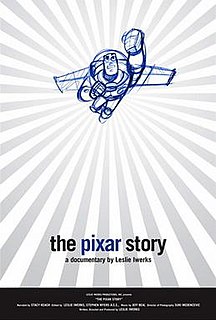
The Pixar Story, directed by Leslie Iwerks, is a documentary of the history of Pixar Animation Studios. An early version of the film premiered at the Sonoma Film Festival in 2007, and it had a limited theatrical run later that year before it was picked up by the Starz cable network in the United States.
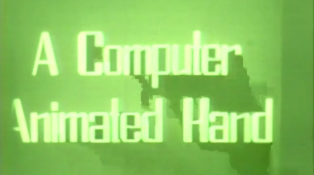
A Computer Animated Hand is the title of a 1972 American computer-animated short film produced by Edwin Catmull and Fred Parke. Produced during Catmull's tenure at the University of Utah, the short was created for a graduate course project. After creating a model of his left hand, 350 triangles and polygons were drawn in ink on its surface. The model was digitized from the data and laboriously animated in a three-dimensional animation program that Catmull wrote.
















